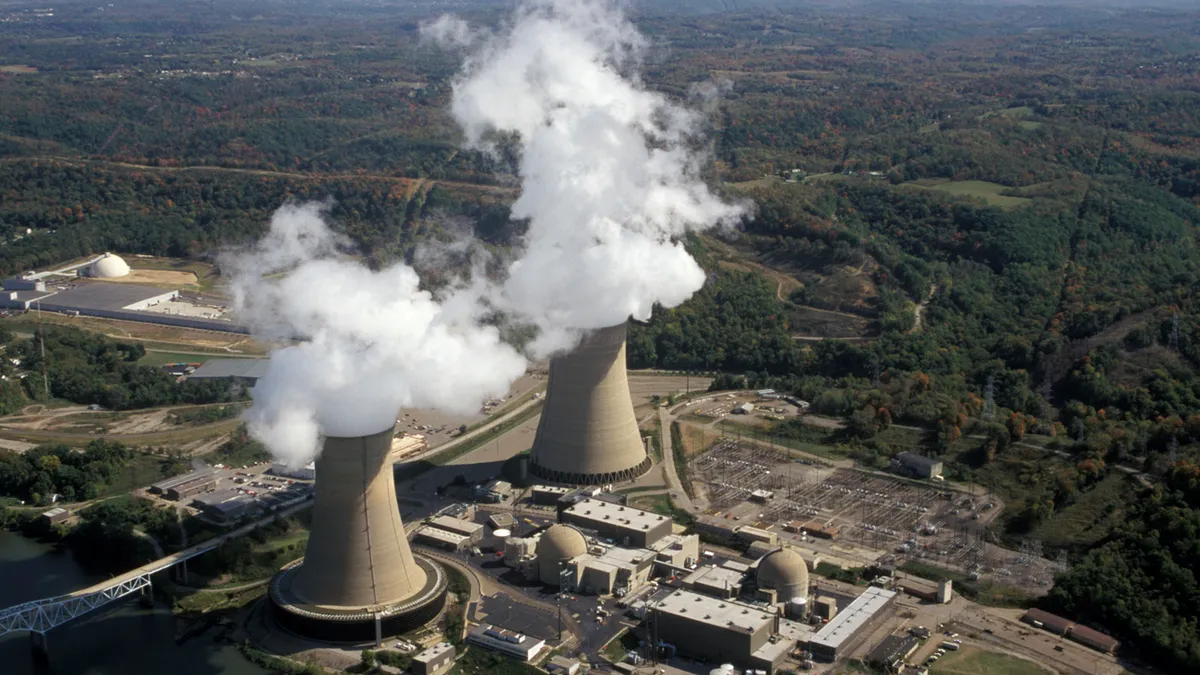Vistra’s proposed $6.3 billion purchase of Energy Harbor assets could “substantially” reduce competition and increase wholesale electricity prices in the PJM Interconnection, the U.S. Department of Justice said Tuesday in a filing with the Federal Energy Regulatory Commission.
As it reviews the proposed deal, FERC should focus on whether the transaction could give Vistra the incentive and ability to withhold generating units from PJM’s markets to drive up power prices, the DOJ’s antitrust division said.
Under the deal announced in early March, Vistra would buy three nuclear power plants in Ohio and Pennsylvania — Beaver Valley, Besse-Davis and Perry — totaling 4,048 MW. The acquisition will also add about 5 million Energy Harbor retail customers to Vistra’s portfolio. Vistra owns roughly 9,200 MW of fossil fuel-fired generation in PJM’s footprint, according to the DOJ.
Under terms of the deal, Vistra will pay $3 billion in cash and assume $430 million in debt from Energy Harbor. Nuveen Asset Management and Avenue Capital Management Il, Energy Harbor’s majority owners, will receive a 15% stake in Vistra Vision, a company that will hold the combined assets.
The proposal sparked protest and concern in June from the Northeast Ohio Public Energy Council and Monitoring Analytics, the PJM’s market monitor. They said the transaction could hurt competition and allow Vistra to exert market power in PJM.
The DOJ echoed those concerns.
“To increase the wholesale price it receives on the low-cost nuclear plants it acquires from Energy Harbor, it is possible that Vistra could withhold output from its higher-cost natural gas generating units,” the department said. “The transaction may therefore increase Vistra’s incentive or ability to raise electricity prices profitably.”
While FERC has generally focused its analysis of proposed mergers on market shares and supplier concentration, the agency should conduct a “supply curve analysis” within PJM regions, the DOJ said.
“A supply curve analysis considers information about the market supply curve (which reflects, among other things, individual generating units’ costs) to determine whether a firm has the ability and incentive to raise the price of electricity by withholding output,” the DOJ said.
FERC should review whether Vistra could drive up power prices by withholding supply from its 369-MW gas-fired Richmond plant in Defiance, Ohio, when combined with Energy Harbor’s nuclear plants, according to the DOJ.
“Vistra could withhold the Richland 4, 5, and 6 generating units during certain hours to raise wholesale energy prices to increase its profits from the nuclear generating units newly purchased from Energy Harbor (as well as across the entire market),” the DOJ said.
FERC should dismiss arguments by Vistra and Energy Harbor that the agency doesn’t need to examine regions within PJM as part of its market review, the department said.
“During certain periods of high demand, a geographic market narrower than all of PJM may be appropriate to assess a proposed merger’s impact on competition,” the DOJ said. “Failure to consider the transaction’s effects in those narrower markets risks overlooking significant harm to competition and consumers.”
Vistra didn’t return a request for comment by press time.















